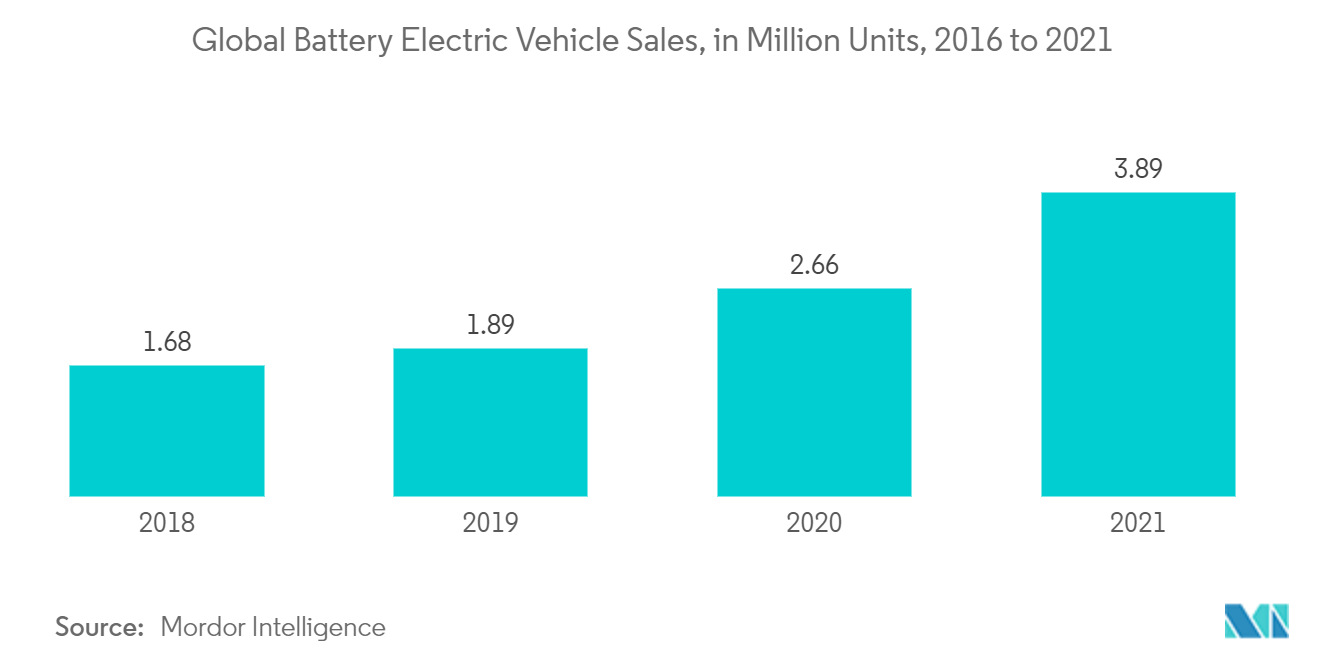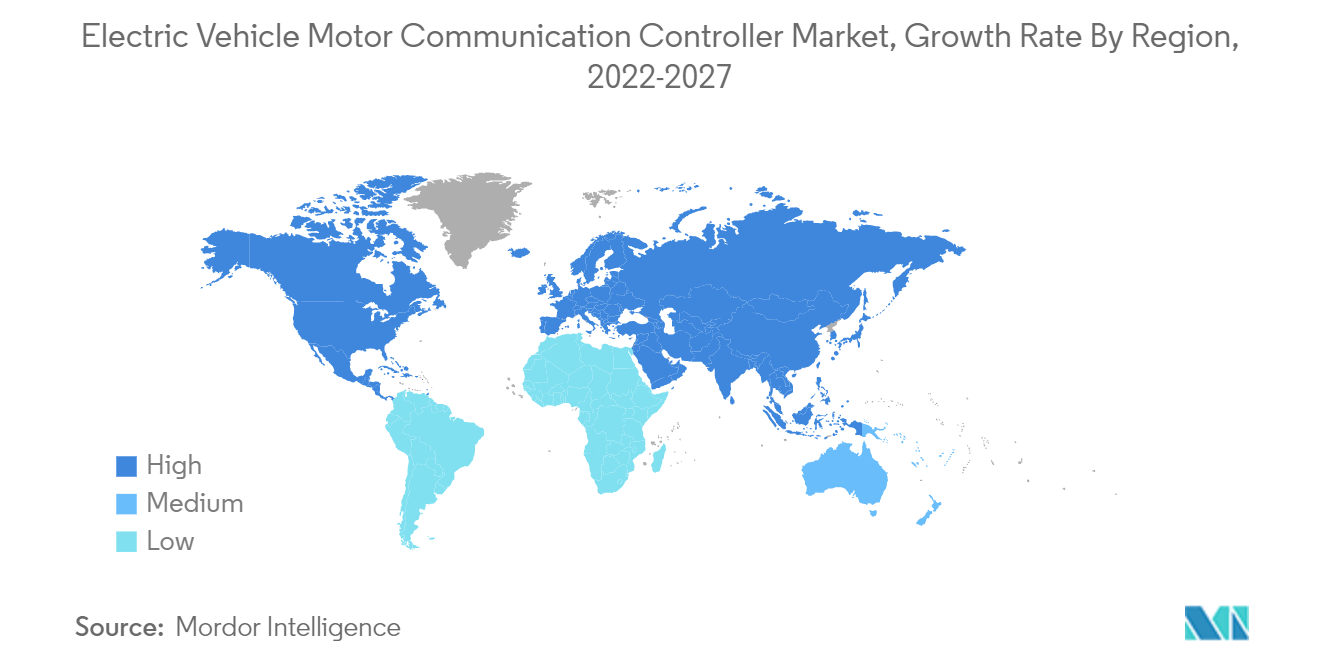Market Trends of Electric Vehicle Motor Communication Controller Industry
This section covers the major market trends shaping the Electric Vehicle Motor Communication Controller Market according to our research experts:
Increasing Sales of Electric Vehicles
- Global EV sales were 8.97 million units in 2021, significantly higher than sales figures in 2020. The volume includes all segments, including passenger vehicles, commercial vehicles, trucks, and propulsion types.
- The movement to accelerate the adoption of passenger electric cars and phase out traditional vehicles with internal combustion engines is gaining traction worldwide. The increase in average fuel prices reflects the fact that Europe has a higher share of new electric car registrations than other parts of the world. Hence, the mass adoption of electric vehicles, owing to rising fuel prices, is expected to increase business globally.
- The market studied is driven by the increasing sales of plug-in hybrid electric vehicles (PHEVs) and battery electric vehicles (BEVs) globally, which has also remained a significant cause for bolstering electric vehicle demand. Manufacturers around the globe have consistently driven the demand for electric vehicles.
- For instance, during the end of FY21, Hyundai sold 313,926 cars globally. The sales statistics stood at a drop of 17% compared to previous years. Moreover, Hyundai observed that its automotive segment witnessed a sharp rise, with almost doubled sales figures for its all-electric cars. This, in turn, makes its sales figure for its BEV to stood at 11,447 units, with a rise of 105%. In addition, plug-in electric cars increased to 14,693 units to 58% year and year growth.
- In Q1, 2022, Volkswagen Group, which includes Volkswagen, Audi, Porsche, Skoda, and SEAT, reported net sales of 99,100 units under its BEV segment. This showcases a steep rise of 65.2 % year-on-year growth rate. In FY2021, Volkswagen Group sold a record-breaking number of plug-in electric vehicles, roughly 762,400 units.

Asia-Pacific is Dominates the Market
- Electric vehicle sales in China increased by 154% last year as more people chose cleaner vehicles, despite the global auto sales slump caused by the COVID-19 pandemic's shortage of semiconductor supplies. In China, manufacturers of electric vehicles sold 3.3 million units in 2021, up from 1.3 million in 2020 and 1.2 million in 2019.
- The nation's NEV sector is advancing due to rising demand, investments, improved supportive facilities and legislation, and technological advancements. By 2025, the Chinese government wants 20% of all vehicle sales to be electric, including adopting NEVs as the government's next vehicle generation.
- China has one of the fastest-growing electric vehicle markets in the world, with an estimated 500 electric car manufacturers flooding the world's largest vehicle market. The Chinese government encourages domestic brands like Nio, Xpeng, and Li Auto to increase their market share as part of the Made in China 2025 industrial master plan.
- Since its inception, China's electric vehicle (EV) industry has grown thanks to government regulations and incentives. Be that as it may, given the colossal extension of the EV area, the impetuses put a huge weight on the public authority. Consequently, China's Finance Ministry announced in January 2022 that all subsidies will be eliminated by the end of the year and that EV subsidies will be reduced by 30% this year. Such measures could obstruct market development.
- OEMs are making new technological investments, like manufacturing EV batteries and components. For instance, China Lithium Battery Technology Co., Ltd.'s (CALB) Wuhan power and energy storage battery production site's second phase was completed in June 2022. It is Wuhan's first significant EV battery project, costing 22 billion CNY.
- Another country in the region, India, is catching up on sales of electric vehicles. In India, 3,29,190 electric vehicles were sold in 2021, a 168% increment over the 1,22,607 units sold the earlier year. Traveler electric vehicle deals in India significantly increased in 2021 to 14,800 units and are still indicating development.
- To meet international emission standards and foster e-mobility in the wake of rapid urbanization, the Indian government has taken several steps to encourage the production and use of electric vehicles in the country.
- The National Electric Mobility Mission Plan (NEMMP) and Faster Adoption and Manufacturing of Hybrid & Electric Vehicles in India (FAME I and II) helped create the initial interest and exposure to electric mobility. For instance, in phase two of FAME, the government announced an outlay of USD 1.4 billion through 2022. This phase focuses on the electrification of public and shared transportation by subsidizing 7,090 e-buses, 500,000 electric three-wheelers, 550,000 electric passenger vehicles, and 1,000,000 electric two-wheelers.
- To promote the domestic electric vehicle industry, the Indian government has provided tax exemptions and subsidies to EV manufacturers and consumers. As per the phased manufacturing proposal, the government has imposed a 15% customs duty on parts used to manufacture electric vehicles and 10% on imported lithium-ion cells.
- With 100 percent FDI allowed, new production centers, and a greater drive to improve charging infrastructure, India's electric vehicle sector is picking up speed. Other development factors for the Indian EV sector include federal subsidies and policies supporting more significant discounts for Indian-made electric two-wheelers and a localized ACC battery storage manufacturing boost. Improved government regulations and policies, like no license required to operate EV charging stations in India, further aid the market's growth.
- With the increasing sales of electric vehicles in India, automakers are investing in developing new technologies and increasing their production capacities to accommodate the demand for new energy vehicles, creating the need for electric vehicle motor communication controllers.


